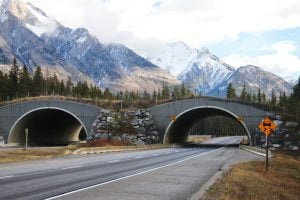Map: Chris Brackley/Canadian Geographic. Gyrfalcon range data: natureserve.org
Dave Mossop is dangling from a cliff face 183 metres up and doesn’t see it coming — he’s too busy counting chicks. But when the gyrfalcon thumps him into the rock face, grabbing the 68-year-old ornithologist with its talons in an effort to keep him away from the fledglings in its nest, it feels like the bird has lived up to its reputation as one of the fastest members of the animal kingdom. “Not many people are crazy enough to study these birds,” says Mossop, a professor of biology at Yukon College’s Yukon Research Centre, in Whitehorse. “But I’ve watched gyrfalcons because I wanted to get the big picture, focusing on both the top and bottom of the food chain.”
Mossop didn’t set out to study gyrfalcons, but he’s spent the last 35 years doing so, after coming north from Vancouver in the 1960s to write his PhD thesis on ptarmigan. He’s collected a raft of data on both species, and the most recent information has him concerned. Populations of gyrfalcons and ptarmigan, both of which make their home throughout the world’s fragile circumpolar ecosystems, appear to be declining in the Yukon.
Like most species in the boreal ecosystem, ptarmigan populations rise and fall, following a 10-year cycle. But in the last decade, things have changed, and the peak in the ptarmigan population that was expected to occur in 2010 never did. Mossop says shorter, warmer winters followed by colder, wetter springs have taken a toll on chicks. “But ptarmigan are amazingly adaptive,” he says. “They’ll probably be okay.”
He’s not so sure about the gyrfalcons, however, which rely on ptarmigan as a food source. While observing the raptors mate, Mossop has noticed they don’t produce eggs until the ptarmigan population reaches its zenith and there’s a surge of protein in the falcons’ diet. “The correlation is so close, it almost looks fudged,” he says. “So when ptarmigan fail to peak, it could be catastrophic.”
Thomas Jung, a senior wildlife biologist with Environment Yukon, has noticed a correlation between Mossop’s data and declines in other species in the territory, including snowshoe hare and Dall sheep — important prey for bigger predators such as lynx. “It’s a cause for concern,” he says. “Changes in climate here may be happening faster than species can adapt.”








